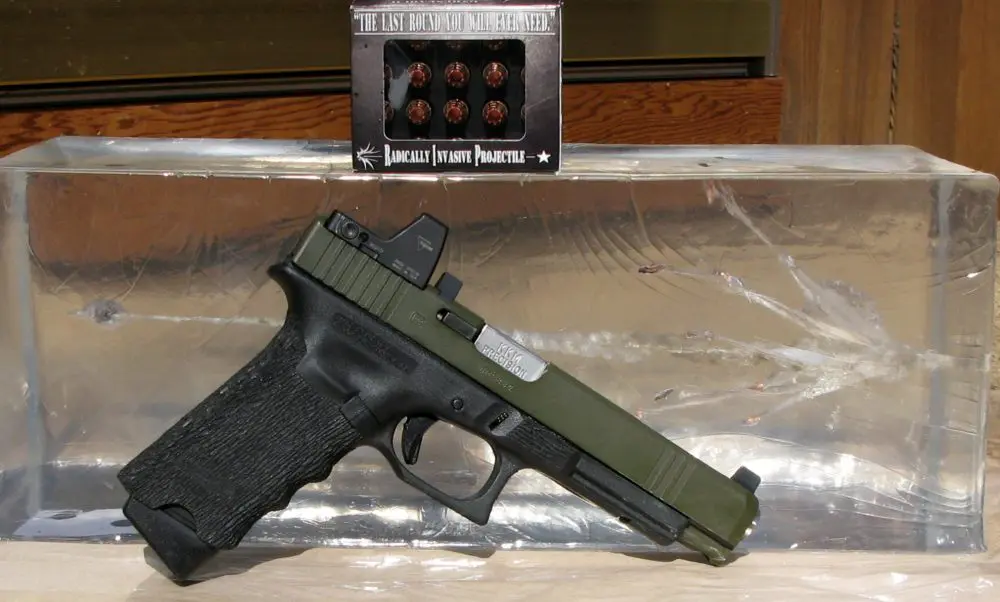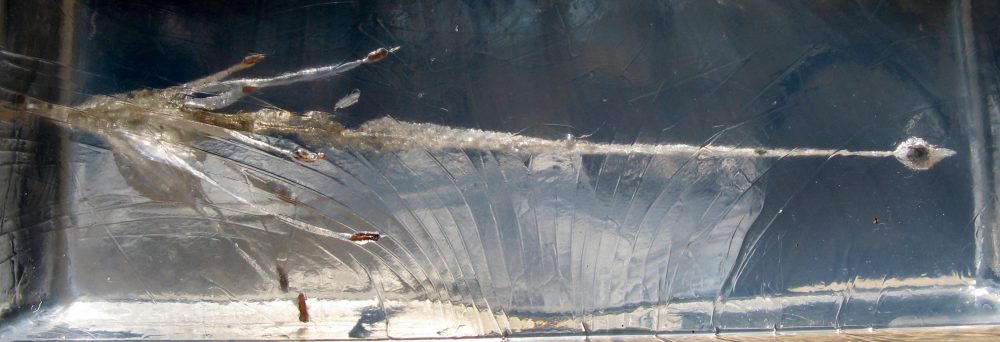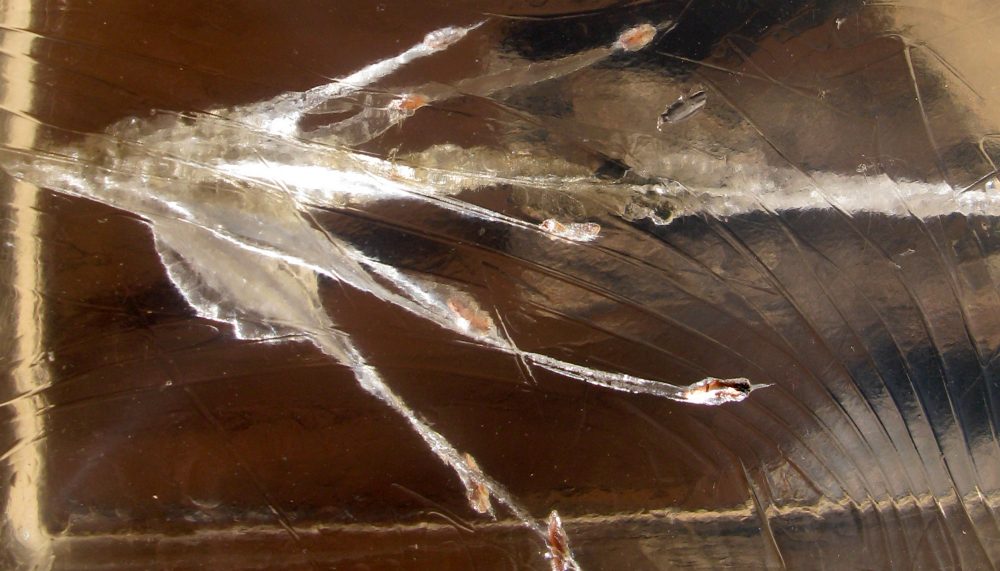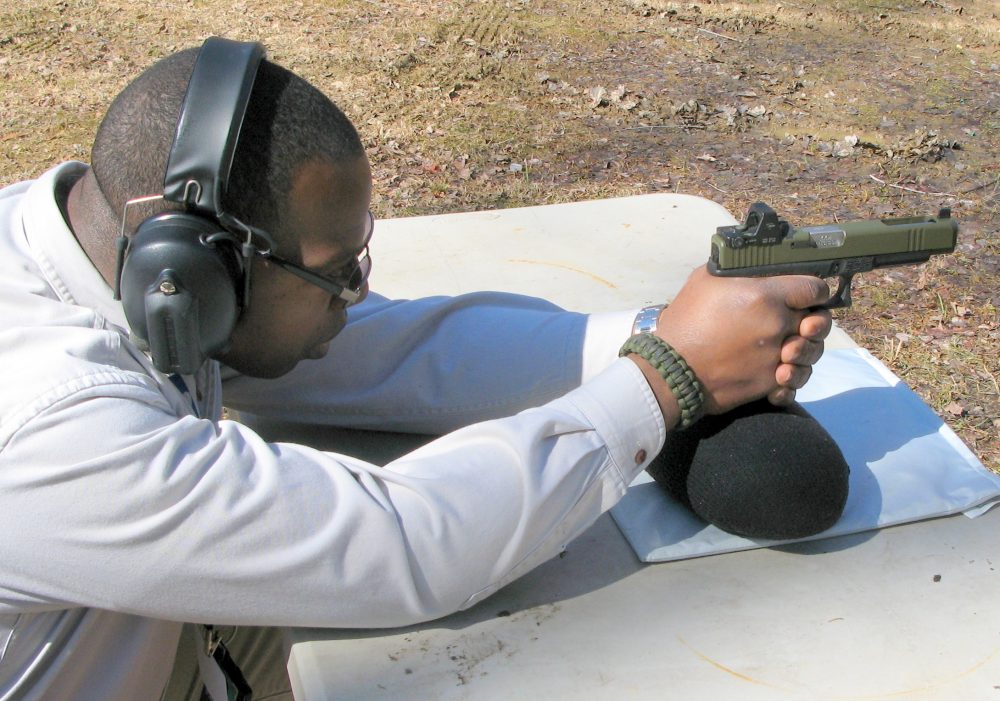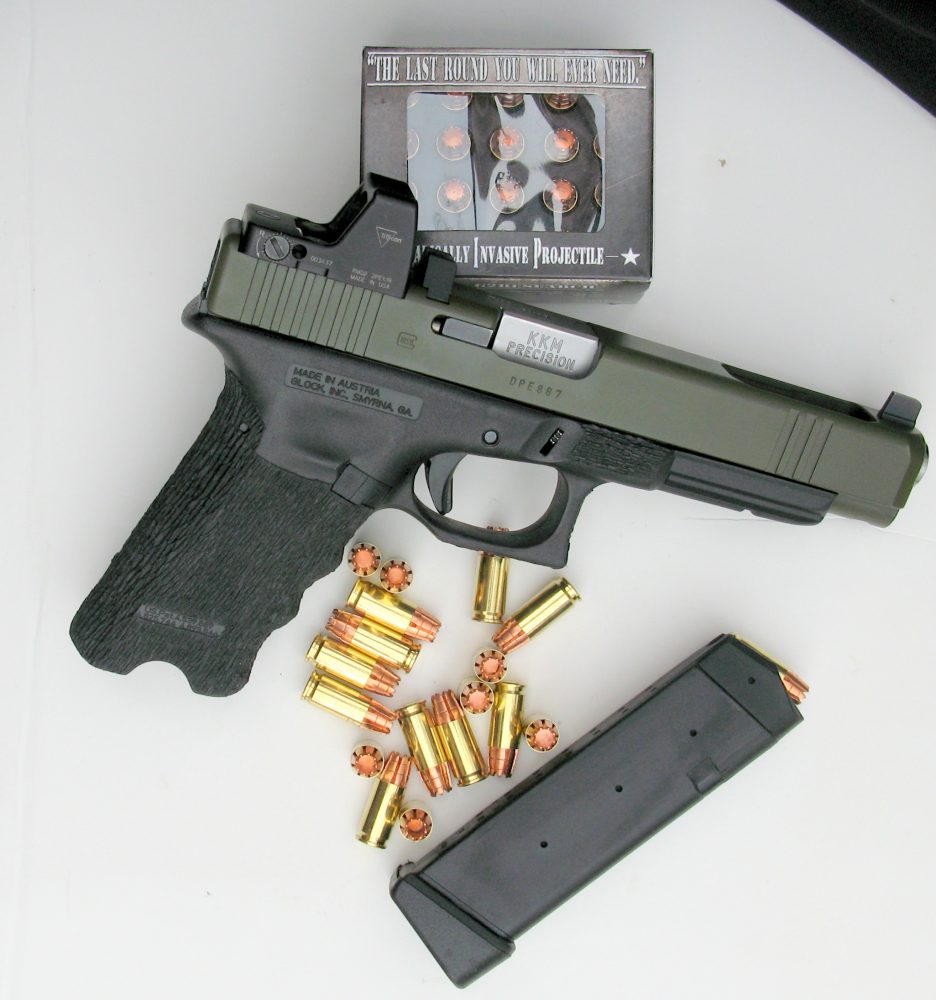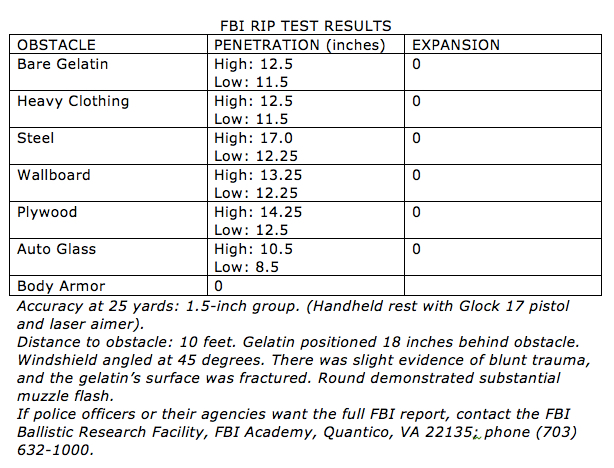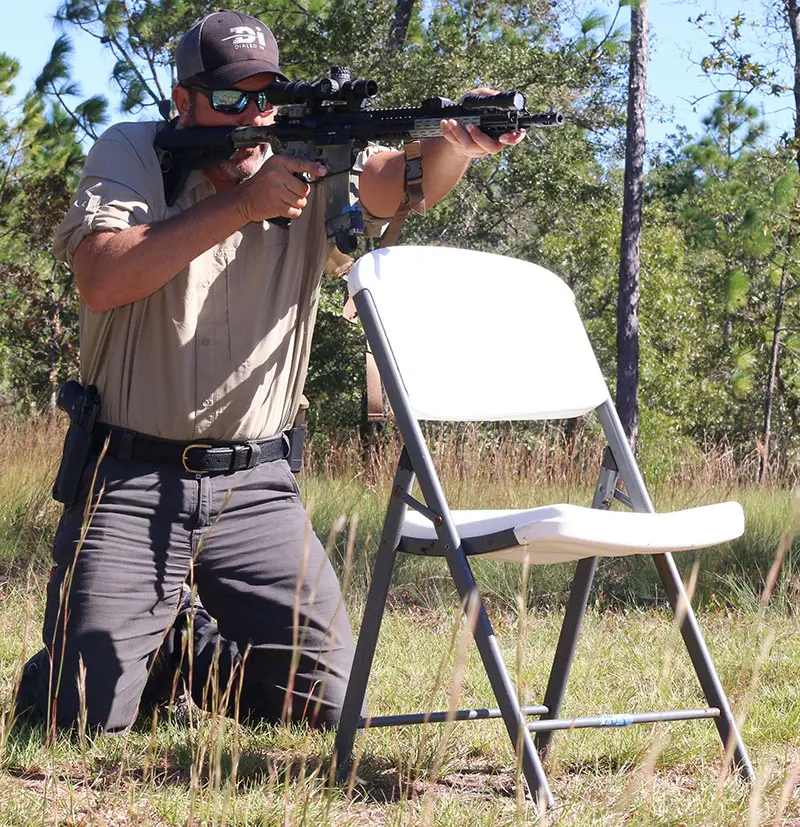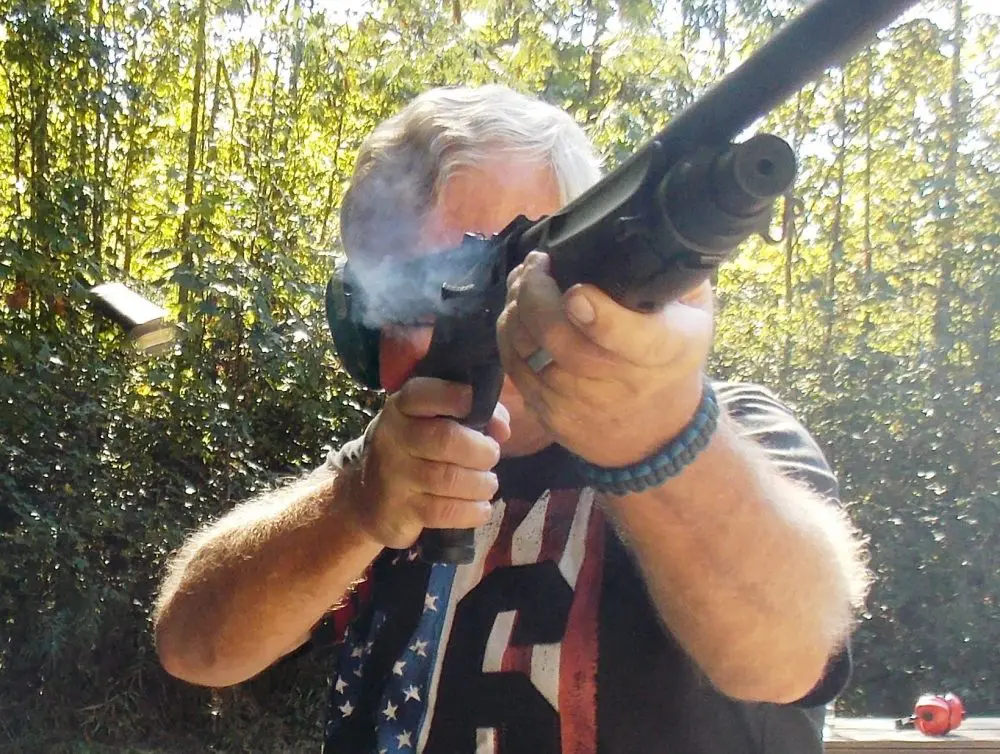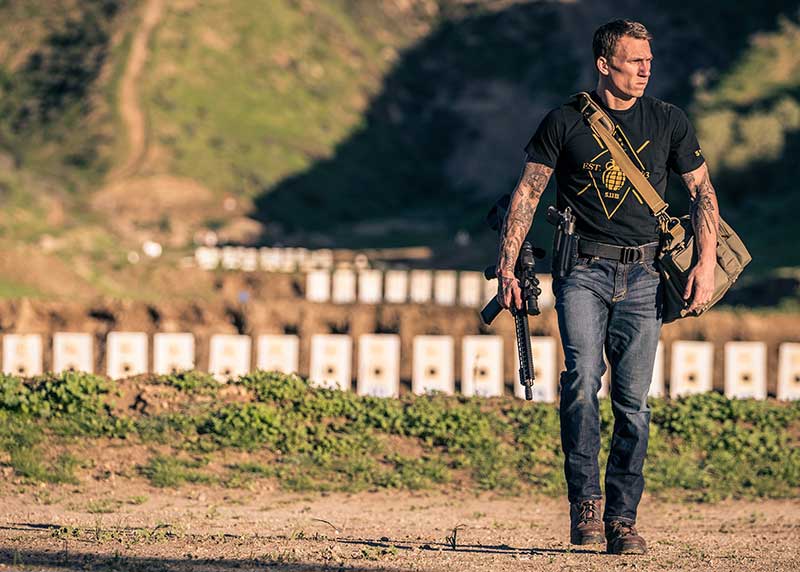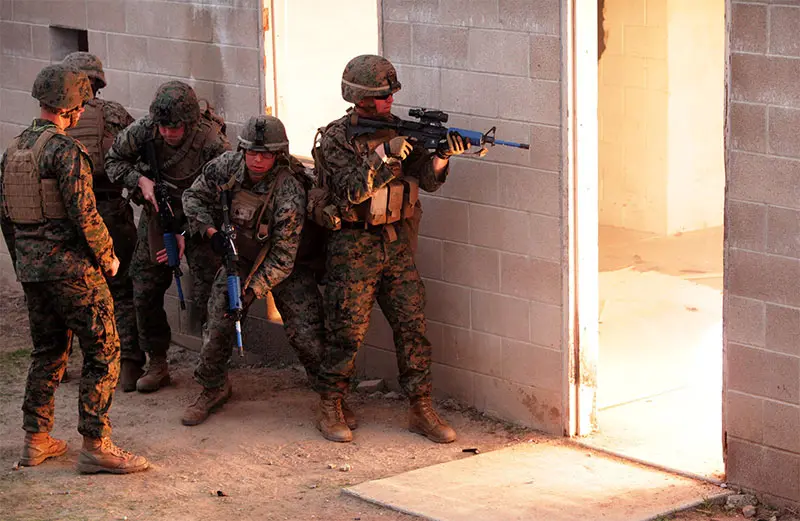The Internet has recently been hyping—and at the same time ridiculing—a nasty-looking radical solid-copper hollow-point (HP) handgun bullet that reminded me of Bill Kaswer’s saw-toothed “Pin Grabber” bowling pin bullet as well as Winchester’s Black Talon round. This bullet received a lot of hysterical mainstream press concerning complaints from emergency room doctors regarding its terminal effects.
After a mass shooting of 15 people at a law firm with Black Talon, where nine died, the protests and misinformation became loud enough to drive the ammo from the market. Black Talon was a well-engineered bullet that delivered exceptional performance in soft tissue and, although tough on soft body armor, did not defeat it. However, unlike the RIP (Radically Invasive Projectile) and its audacious claim that it is “the last round you will ever need,” the Talon was no wildcat load or “trick bullet” and, during its relatively short tenure, proved to be one of the best conventional handgun bullets to come off the drawing boards of Winchester’s East Alton, Illinois plant.
Terminal effects of “trocar-pointed” RIP round through heavily clothed Clear Ballistics test media at five yards. Round launched from Bowie Tactical Concepts customized Glock 34. Note early fragmentation and deep penetrating central core.
Table of Contents
FRAGMENTING AND PRE-FRAGMENTED AMMUNITION
I am normally not in the light bullet, high velocity, fragmenting handgun bullet camp and prefer heavier expanding and deeper penetrating slugs. But I have been impressed by some unique ultra-high-velocity bullet designs and, even though most have fallen short terminally, I am open to evaluating them.
The fragmenting or pre-fragmented handgun round concept is not new, but most have been shallow penetrators with numerous small permanent secondary wound channels that augmented the bullet diameter core, which often was the only projectile element that penetrated deeply. Sintered bullet hollow points and Segmented .22-caliber Long Rifle HP rounds are also designed to fragment and perform in a similar manner.
I used a handgun round with a pre-fragmented payload to harvest a 300-pound wild boar, but it was far from an immediate stop. The initial round hit just above the porker’s shoulder and flattened him, but it was up two seconds later and began to trot away. I shot it three more times and it continued on its way without pause until it finally collapsed 50 yards down a slope. Luckily, the animal did not charge, because there was no tree to climb and my back was to an 80-foot cliff.
Needless to say, the manufacturer who sponsored the hunt needed to tweak his new .40-caliber round.
Deepest shards reached six inches in media. Wound would have been bloody but shallow, with possibility of deeper penetrating tines/shards and central core contacting an organ.
TROCAR BULLET
Getting back to this new round that’s attracted so much attention: there are some important differences between the RIP and other rounds that purposely lose their integrity in soft tissue. Its projectile was inspired by the multi-faceted triangular tipped medical instrument known as the trocar, which is also employed in razor-sharp broad-head hunting arrows. A trocar is employed for laparoscopic surgery, draining bodily fluids and gasses, and embalming.
When the RIP rips into flesh and bone, a 50-grain hub or central projectile punches through a deeply penetrating .35-caliber wound channel while simultaneously shedding approximately 46 grains of multiple (eight) copper shards in a widely dispersed circular pattern from four to six inches in diameter. Like grenade fragments, these shards penetrate and lacerate surrounding tissue, which increases hemorrhaging and the “possibility of damaging an organ.”
Close-up of RIP round fragmentation in clothed Clear Ballistics test media at five yards. Diameter approximately four inches. Deepest tine/shard went six inches.
THE BOSS AND G2 OBJECTIVES
Cliff Brown is the no-nonsense CEO of G2 Research and is, what else, a proud former Marine. G2 is one of several companies that he captains throughout the state of Georgia. He advised that he wanted to create the “most sophisticated state-of-the-art copper bullet ever made” that would possess the penetration of a full metal jacketed round and the trauma of a jacketed hollow point
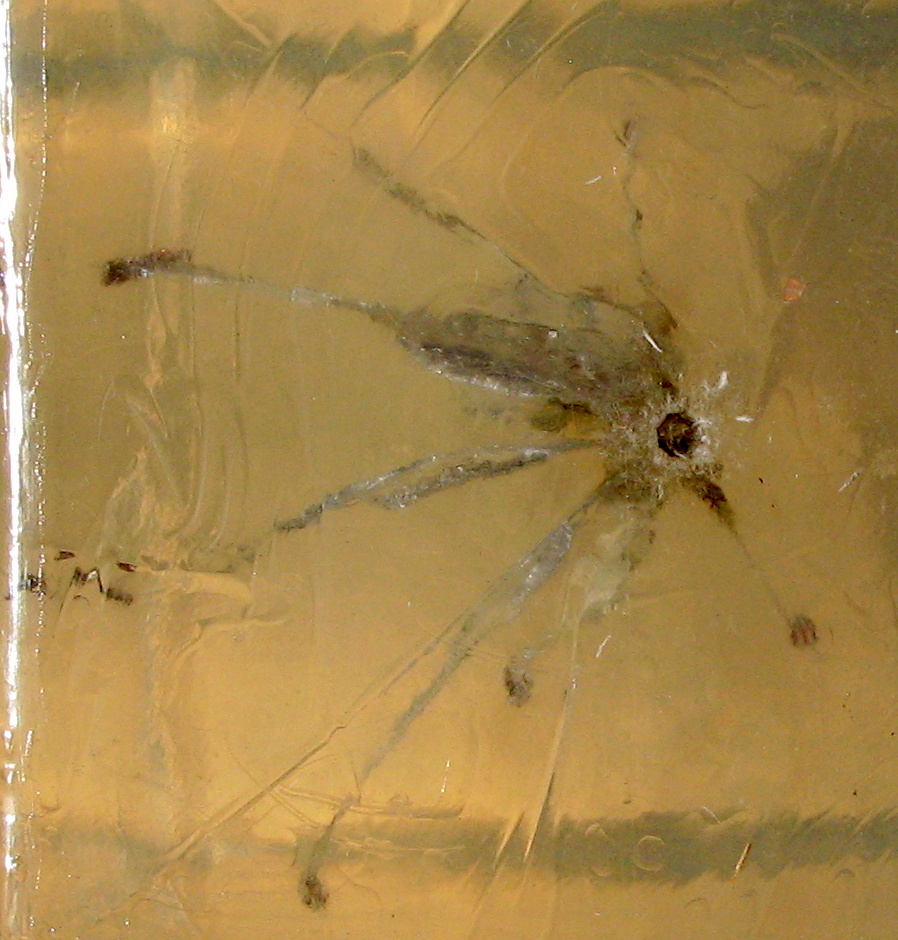
Although a costly round, Brown and staff felt it would be justified if it performed well in a variety of media and reflected the highest quality in munitions. Furthermore, “lead is being phased out and solid metals will be the future.” R&D was extensive and the precision-machined bullets have 12 different features cut into them with “tolerances among the strictest in the industry.” The RIP is “designed to cope with real-world elements that law enforcement and citizens often confront in self-defense situations.” At over $2 per round, the RIP will appeal to those who want “only the best.” As Cliff puts it, “How much is your life worth?”
Cliff advised that in addition to the 9mm, they have a .45 ACP projectile that is “even more devastating.” Also on the menu are .380-caliber and 12-gauge slugs. Depending on the success of the initial offerings, other calibers will follow. He stated that the Parabellum’s specifications are as follows:
- Bullet diameter: .355 inch
- Design: trocar point
- Materials: precision machined solid copper, lead-free hollow point
- Weight: 96 grains
- Muzzle velocity: 1,265 fps
- Accuracy: two-inch groups at 25 yards
- Penetration: 16 inches of test media
- Fragmentation: nine separate sub-projectiles, with eight-inch
- Defeats all barriers employed in FBI ballistic testing protocol
- Retail Cost: $47.95 per box of 20
diameter pattern of separate wound channels
RIP PERFORMANCE
From a handheld rest, five-round groups at 25 yards with a Bowie Tactical Concepts Trijicon RMR red dot sight-equipped Glock 34 (G34) with KKM match barrel and Glock Triggers.com trigger averaged 1.64 inches. In 20-degree weather augmented by a nasty wind chill, high muzzle velocity was 1,310 feet-per-second (fps), low velocity was 1,305 yielding 363 foot pounds kinetic energy (fpke) on average. Extreme velocity spread was 32.0, with a standard deviation of 10.0. As readers know, cold temps usually reduce muzzle velocities.
Advertised muzzle velocity for the 96-grain projectile is quite mild, with heavier-weight bullets matching its velocity, and +P and +P+ rounds in the same genre exceeding it by hundreds of fps.
For example, Buffalo Bore’s 95-grain +P+ offering exits the muzzle at 1500 fps or 475 fpke. Although close, it does not make the IDPA power factor for stock or enhanced service pistols. However, the RIP is very pleasant to shoot and employs a clean-burning propellant that leaves minimal amounts of carbon on the G34’s feed ramp. Functioning was 100% and the thin, saw-toothed tip of the copper bullet was not distorted when the slide slammed it into the KKM barrel’s feed ramp. Brass was from Dynamic Research Technologies.
Top Shot All StarWilliam Bethards drills bare block of Clear Ballistics test media at 25 yards. Pistol is Bowie Tactical Concepts customized Glock 34. RIP was consistently accurate.
NO COP KILLER
A number of police officers have expressed concern that this is a “cop killer” bullet and will eventually end up in gang bangers’ and other criminals’ arsenals. Even at two bucks a round, it’s still feasible that wealthier inner-city cartels could stock up on the RIP, but be advised that it is not a player in the body armor defeating club.
At five yards, it got about halfway through an LIIA ballistic panel. The tines became enmeshed in the Kevlar fibers, which halted bullet rotation and velocity and forced the tines to implode on the core projectile. Bullet flattening or expansion from impact was .479-inch and with no loss of bullet integrity. This is exactly how G2 designed the bullet.
The 96-grain projectile also failed to defeat vehicle aluminum armor plate at 25 yards.
CLEAR BALLISTICS TEST MEDIA
Through G2 Research, Clear Ballistics provided me with two blocks of crystal clear and calibrated ballistic test media. I clothed one block with a heavy winter jacket, shirt and undershirt, and shot it at close range. After penetrating the layers of clothing, it encountered the block and exploded into a stellate pattern of ten sharp-edged fragments after only one inch of penetration.
The diameter of the lateral shard dispersal was 4.5 inches. Some shards broke in two and tumbled at the initial point of separation. It would have created a very nasty surface wound with copious bleeding at a depth of only three inches. Two shards went almost six inches into the media. Depending on the physique of the threat, they may have been able to contact the heart or lungs.
After creating a one-inch, blood-drop-shaped temporary stretch cavity, the core or bullet base plowed a straight and narrow, but deeply penetrating, 14.5-inch wound channel in the media. The first cavity was followed by a smaller one indicating some yaw, and the core came to rest at an oblique angle. Some remnants of clothing were in the wound channel.
On a side note, Clear Ballistics can be reconstituted multiple times and is therefore a cost-effective test medium.
The RIP round is a very consistent performer. With a bare block of Clear Ballistics at 25 yards, penetration and fragmentation were very similar to the shot made at five yards, albeit a little less dramatic.
For comparison, I shot a sintered hollow point (HP) round through winter clothing into the close range block but from the opposite end. The 100-grain bullet penetrated two inches and commenced fragmentation. Ten fragments, including the central core, were produced. The deepest fragment went 7.5 inches and a speck of its core stopped at 15 inches. The fragmentation pattern was stellate in shape, but not as large as the RIP’s. Tissue destruction was less with the sintered HP.
RIP ammunition and Bowie Tactical Concepts customized Glock 34. Note “trocar point” and huge hollow cavity of RIP round.
FBI RATES RIP
The FBI also examined the round and found that it “did everything that it was advertised to do.” However, the agents involved in testing would not adopt the round for agency use, because “it fragments too early and loses too much of its weight/integrity.” With a 4.5-inch sealed test barrel, high muzzle velocity was 1,310 fps, with 1,305 fps as an average—very consistent performance. This mirrored my results with the five-inch G34.
In bare 10% gelatin, core projectile penetration varied from 11.5 to 12.5 inches for five rounds fired. With body armor, which the Bureau tests with contact shots, the RIP round failed to defeat LI, LII and LIIA ballistic samples. Two layers of auto sheet steel and body armor were the only obstacles that prevented the RIP from fracturing and/or expanding.
CONCLUSIONS
The RIP performed as advertised and certainly is potentially lethal, but this is no super bullet that will make all others obsolete. Traditionally constructed lead core and copper jacketed hollow-point bullets have performed much better and with more tissue destruction.
For example, in FBI tests almost 20 years ago, 124-grain CCI GDHP at 1,202 fps averaged 17.69 inches of penetration and 0.511 inch of expansion for 40 rounds fired in eight different tests. RIP needs to be tweaked to delay its fragmentation until deeper penetration is achieved.
However, for those who are recoil sensitive and want a self-defense load that is pleasant to shoot and easy to control, the RIP round excels.
SOURCES:
G2 Research
(706) 654-5614
www.g2rip.com
Bowie Tactical Concepts LLC
(937) 544-4606
www.bowietacticalconcepts.com
Clear Ballistics
(888) 271-0461
www.clearballistics.com
